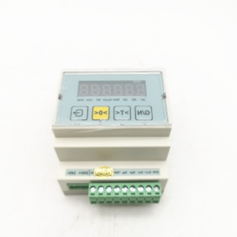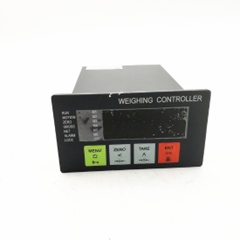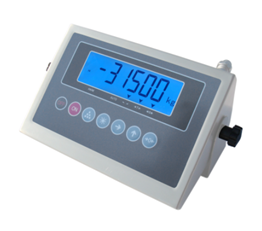 Force Sensor
Force Sensor
 Load Cell
Load Cell
 Torque Force Sensor
Torque Force Sensor
 Multi-axis Force Sensor
Multi-axis Force Sensor
 Piezoelectric Force Sensor
Piezoelectric Force Sensor
A Load Cell is a weight measuring device. They find their application in a variety of industries, from grocery stores to aerospace engineering. Their ability to give very accurate reading has gained them industry-wide acceptance as the go-to measuring apparatus for achieving accurate weight or pressure readings.
Why Choose Load Indicators For Your Load Cell?
The load cell indicator connects directly to the strain gauge. It takes the signal from the load cell and converts it into a displayed value. These digital indicators are mounted on a panel from where they receive the power and the signals to display the measurement values.
Load cell indicators also have some additional functionalities available, such as:

Analog functionality, wherein the device is capable of producing analog outputs such as current or voltage, proportional to the input signal. Data interface functionality, which allows the user to collect information for further analysis. Set point functionality to allow users to activate alarms or simple control functions through preset input values. Load cell indicators are extremely sensitive to the changes in electricity. So, even when the indicators detects a slight change in the electrical signals coming from the strain gauge, they will represent that value in terms of weight. As such, selecting the right load cell meter is important to ensure end-to-end accuracy in physical measurements. Following are some of the important parameters based on which a load indicator or strain indicator is selected: Type of Display There are two fundamental types of displays available - numeric and alphanumeric. A numeric display is capable of displaying only numbers, while the alphanumeric display can show both numbers and letters. Lighting Technology
LED or LCD lighting technologies are generally used in the digital display. An LED (Light Emitting Diodes) display uses diodes to light up the segments. These types of displays appear bright in the dark.
An LCD (Liquid Crystal Display) usually displays black digits on a light gray screen. These types of display consume less power as compared to LEDs, but are difficult to see in the dark without backlighting.
Features
A load cell indicator also comes with additional features/functionalities including:
Set point: This feature allows users to set control limits for weighing parameters. Once the load cell reaches or exceeds the set values, the unit sends an off control signal. Similarly, an on signal is sent when the value drops below the set point.
Alarms: Built-in audio or visual alarms to indicate once the set point values are reached.
Additional channels: The display meter with more than one channel to receive and record signals from multiple sources.
USB port: A USB port makes it easy to connect the display meter to a computer for data analysis.
Signal Input Type
For accurate functioning, a load cell indicator must be able to accept the input signal sent to it. The input signal types that a meter must accept include AC and DC voltage, AC and DC current, as well as AC and DC power. Additionally, the indicator must also accept resistance resulting from the strain gauges.
